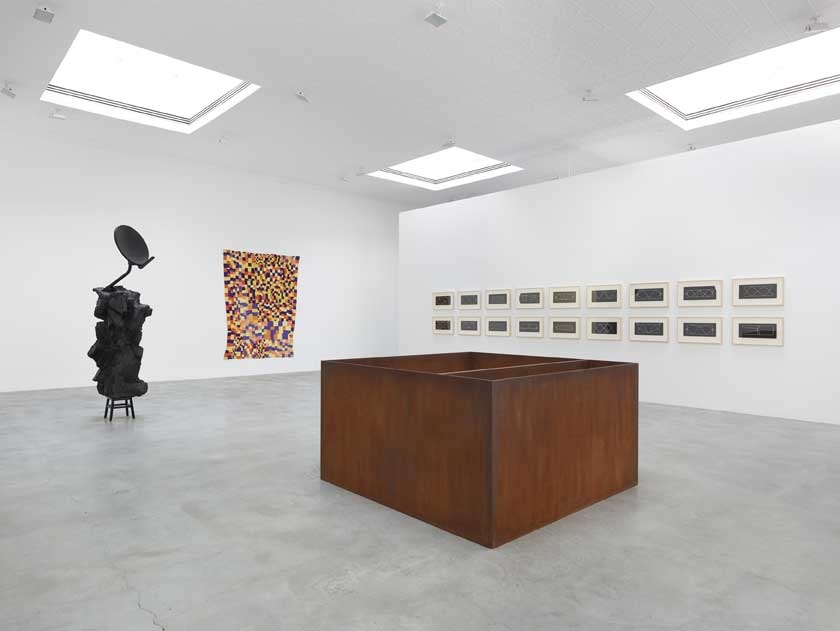A measure of progress can be found in the distance between obsolescence and nostalgia. For artist Terry Winters, who organised this show, the latter looks to veil the former with a shroud of mythical reverie. And with his curatorial endeavour, Roving Signs, which takes its title from a Gold Rush miner’s melancholy ballad, Winters weaves a narrative that finds in vernacular technology a means to reconcile the effects of industry.
Among the artists included, the spectre of Beat Generation polymath Harry Smith looms large. Widely known as an ethnographer of American folk music – the Smithsonian has released a box collection of his recordings – Smith was also a maddeningly prolific collector of archaic ephemera. A bearded Arachne, Smith had, at the time of his death, been working on a thousand-page compendium of string figure formations – the practice of forming pictographs through the manipulation of string, which dates back to prehistory. Winters, enamoured after first encountering Smith’s twined creations, curated an exhibition of them last year for the journal Cabinet.
Deprived of their animating function, the delicate twists, whirls and knots comprising the 18 figures included in the group show come off as static, albeit absorbing, abstractions. Their framed presentation lends the figures an archival quality, a document of a manual tradition lost to the digitless digital age. Elsewhere, Rosie Lee Tompkins’s hanging patchwork quilt, Half-Squares Medallion (1984), summons bygone folk techniques. But in its alternating hues of lilac and aubergine, Tompkins’s random assemblage of geometric polyester and sateen patches presages the rise of the catchall qr code. And then there is John Cohen’s Inserting Final Passes of Welt Using a Needle (1956), which captures the well-worn hands of a Peruvian Q’eros Indian nimbly weaving with the aid of a loom. If Tompkins’s abstract compositions rely on probability, Cohen’s images document an adherence to more sacred geometries.
A conceptual thread drawing many of the works together is Winters’s interest in the patterns and form of line, a subject on which his own works often dwell. The series of six monochromatic lithographs that comprise Anni Albers’s Line Involvements (1964) lambently suggest the swirls and eddies of Smith’s twiddled creations. In contrast, the dozen aerial shots that make up the Center for Land Use Interpretation’s looped slideshow, Autotechnogeoglyphics: Vehicular Test Tracks in America (2006), echo Albers’s sinuous creations, albeit on a geographic scale. A testament to the marring legacy of American expansion and extraction, the aerial images offer the industrial age’s rejoinder to the Nazca Lines.
In a small chapbook accompanying the exhibition, a poem by Winters opens with the lines, ‘Archaic rites/from the new lost city’. Progress, it would seem, is best mourned by the past. The sense of wistfulness coursing through Winters’s exhibition is tempered by the terms of its departure. Situated at the gallery entrance, Rachel Harrison’s Apple Multiple (2008), a synthetic apple dotted with pins inserted in the region of a bite, mordantly recalls the story of Eden’s fated duo. The price of knowledge was expulsion from paradise. A devil’s bargain, indeed.
This review was first published in the October 2013 issue.
